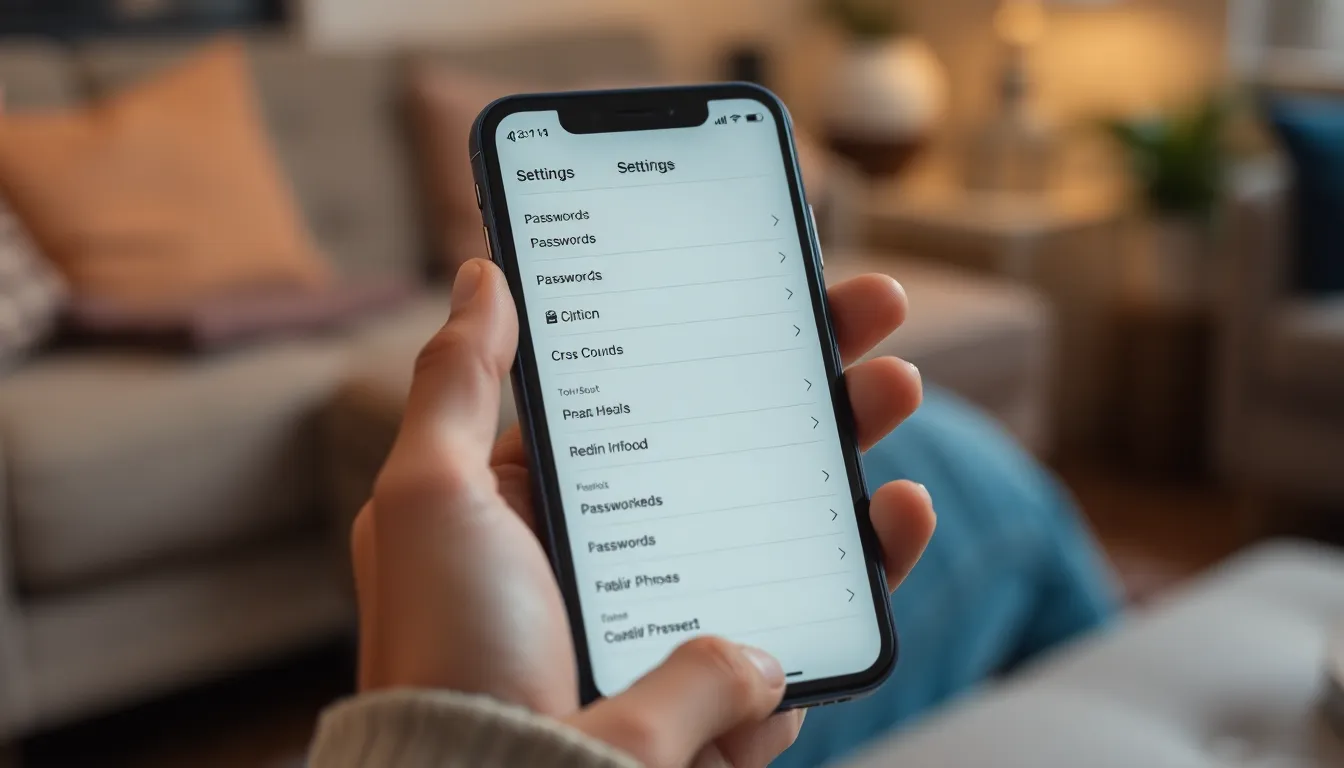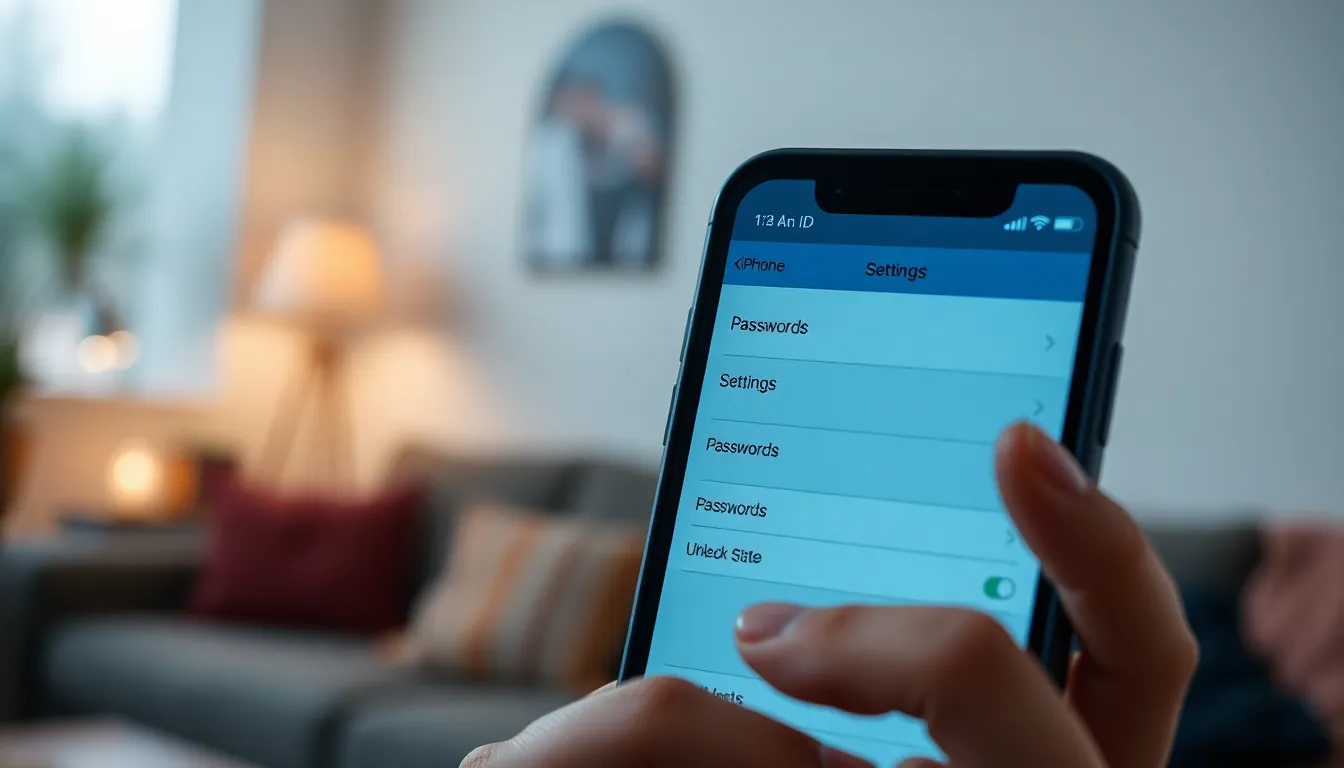Table of Contents
ToggleIn a world where remembering passwords feels like trying to remember the names of every character in a soap opera, checking app passwords on an iPhone can seem like a daunting task. Fear not! With just a few taps, you can unlock the secrets hidden in your device and reclaim your digital sanity.
Understanding App Passwords on iPhone
App passwords provide a secure way to access specific applications. They help keep accounts safe by creating unique passwords for apps not compatible with standard two-factor authentication.
What Are App Passwords?
App passwords are unique codes generated for individual apps. These codes bypass standard login protections, allowing seamless access without entering primary passwords. Each app password links to a specific app or device and can’t be reused across different applications. Users generate these passwords from their account settings, often under security options. Apple ID and other major services offer this feature to enhance user security.
Why Use App Passwords?
Utilizing app passwords increases overall account security. By assigning distinct passwords to each app, users minimize risks associated with data breaches. If one app password becomes compromised, it won’t affect primary account access or other applications. Additionally, using app passwords simplifies authentication for apps that don’t support two-factor authentication. These passwords empower users to maintain control while ensuring a higher level of safety for private data.
How to Check App Passwords on iPhone

Checking app passwords on an iPhone requires a few straightforward steps. Users gain better control over their security by following the instructions below.
Accessing Settings
First, open the Settings app on the home screen. Users need to scroll down to find Passwords. Tapping on this option leads to the password management section. Face ID or Touch ID authentication may occur for added security. Once verified, users gain access to their stored passwords.
Locating Passwords and Accounts
Next, the Passwords menu displays a list of accounts. Users can scroll through the list or use the search bar to find a specific app. Tapping on an entry reveals the app’s details, including the username and its unique app password. Copying the password is easy by selecting the copy icon next to it.
Managing App Passwords
Managing app passwords ensures a streamlined and secure experience on an iPhone. Users can easily view, edit, or delete app passwords as needed.
Viewing and Editing App Passwords
To view app passwords, navigate to the Settings app and select Passwords. After authenticating with Face ID or Touch ID, users access a list of saved passwords. Each entry includes the app name and corresponding password. Editing is straightforward; tap on the desired app account, make necessary changes, and save. This functionality allows for quick updates, ensuring passwords remain current and secure.
Deleting App Passwords
Deleting unneeded app passwords involves a few simple steps. From the Passwords list within Settings, locate the account intended for removal. Swipe left on the app entry to reveal a Delete option. Tapping Delete confirms removal of that specific password. Regularly managing app passwords helps maintain security and reduces the risk of unauthorized access.
Best Practices for App Passwords
Managing app passwords effectively enhances security and usability. Following best practices ensures users protect their digital information while simplifying access.
Creating Strong App Passwords
Creating strong app passwords is crucial for security. Users should incorporate a mix of uppercase letters, lowercase letters, numbers, and symbols. Passwords should be at least 12 characters long to maximize protection. Avoid using easily guessable words or personal information. Instead, consider using a password manager, which generates and stores strong passwords securely. This approach ensures unique passwords for each app, drastically reducing the risk of breaches. Always prioritize security when setting passwords, as stronger passwords correlate with better defense against unauthorized access.
Regularly Updating App Passwords
Regularly updating app passwords enhances overall security. Aim to change passwords every three to six months to minimize vulnerability. Users should replace old passwords with new, unique ones rather than recycling old passwords. Consider using reminders or calendar alerts to stay consistent with updates. If an app experiences a data breach, immediate password changes are essential. Implementing this habit helps maintain tight security across all applications. Strong, regularly updated passwords serve as the first line of defense against unauthorized access, safeguarding personal information effectively.
Managing app passwords on an iPhone doesn’t have to be overwhelming. By following the simple steps outlined, users can easily check and manage their app passwords to enhance their security. The ability to view, edit, and delete passwords empowers users to maintain control over their digital identities.
Regularly updating app passwords and employing best practices for password creation significantly reduces the risk of unauthorized access. This proactive approach not only safeguards personal information but also streamlines the user experience. Embracing these strategies ensures that users can navigate their apps confidently while keeping their data secure.





